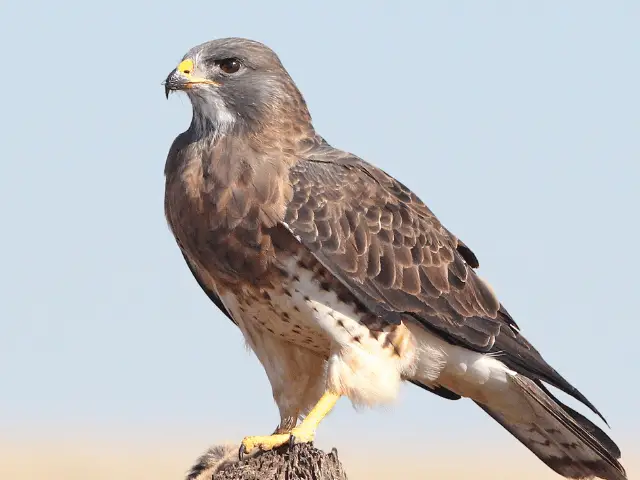Do you know what hawks eat? Mostly toads, squirrels, birds, snakes, frogs, rabbits, insects, and voles.
And most likely...
They're in forests, woodlands, near lakes, & fields.
That's because those are where most of the sumptuous treats we've mentioned thrive.
MN has lakes, forests, state parks, plus so many other potential habitats. Don't forget; it's the land of over 10,000 lakes.
So which hawks live here? Let's start knowing more about them, too!
The Hawks Of Minnesota: 10 Species To See
1. Red-Tailed Hawk
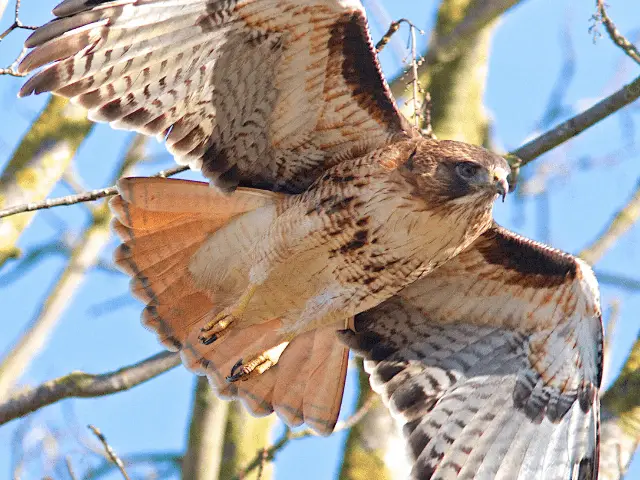
You'll see the red-tailed hawk more often than other species as it has a large population in North America. Plus, it's a resident bird in this state, where it has a breeding range. In winter, it may fly south.
A mating pair builds a nest high on a tall tree, a cliff, or even on a pole. But that's if it can't find a reusable nest. The nest is a stack of sticks that can be as tall as six feet with leaves and barks as a soft cushion for the nesting female and its chicks.
The red-tailed hawk eats rodents, but it doesn't mind snakes, frogs, and bats if rabbits and voles are unavailable on that day. You can spend hours enjoying its meticulous hunting process. First, it flies over the field, looking for prey, such as a rabbit or a lizard.
Then, with one swoop, the red-tailed hawk squeezes the prey with its talons and flies with it back to its perch.
2. Northern Harrier
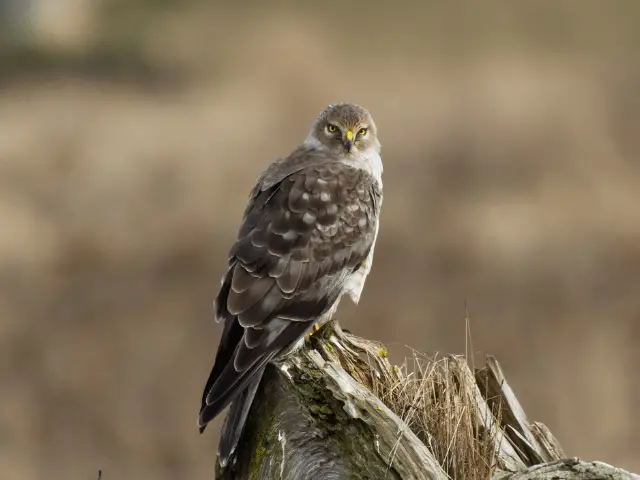
The northern harrier has long wings that give it a wingspan of 46 inches. Quite a large bird, right? If you're in the southwest area of the state, you can spot this hawk any time of the year.
However, for people in north or central MN, the breeding season in summer is a more favorable time to go birding, and in the winter months for southeast MN. The northern harrier lives in open fields or wetlands where it hunts small mammals, insects, and amphibians.
That's where your birding trip should take you.
3. Northern Goshawk
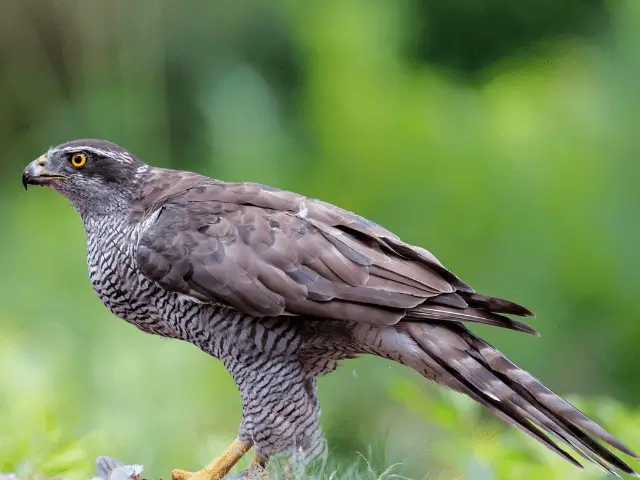
It's another large bird to spot any time of the year in the northeastern area of the state. The northern goshawk might be 25 inches long, a size you can spot from a distance, but it's elusive.
Therefore, walk through forests stealthily to spot it high up on tall trees. It lives in mature forests and is very territorial.
For this hawk's identification, remember that it has a dark gray back and light gray, barred underparts. Like other raptors, squirrels, rabbits, insects, and snakes are on the menu.
4. Red-Shouldered Hawk
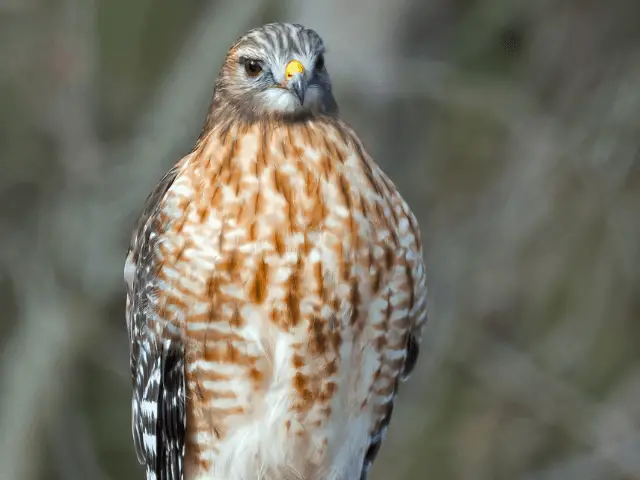
Like the red-tailed hawk, this one also has a breeding range in Minnesota.
The red-shouldered hawk's diet consists of birds, reptiles, amphibians, and mammals.
It's a stunning raptor whose pale underside has reddish stripes, and its head is brown. Its wings display a striking brown and white checkered pattern with white bands on its black tail. You'll spot more red-shouldered hawks in the southern region of the state.
FYI: Did you know you can catch a glimpse of this predator in the state of Georgia alongside some hawks mentioned in this article?
5. Broad-Winged Hawk

This Minnesota hawk loves lakeshores, and there are plenty of them in this state. It has a breeding population in MN. If you know Minnesota hawk sounds, you'll easily spot the broad-winged hawks when you explore forests because their piercing whistles are unmistakable.
Their wings have reddish-brown feathers, while their tails display black and white barring. They migrate in flocks during their spring and autumn migrations. Plan a birding tour during their migration!
6. Swainson’s Hawk
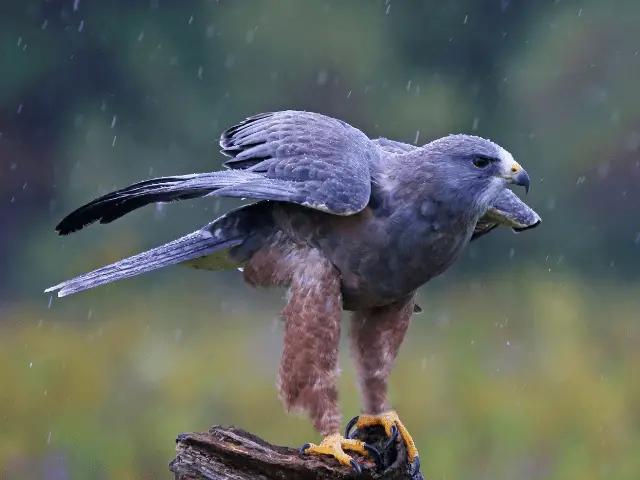
You have higher chances of spotting this raptor if you plan your birding tour between April and September as the birds fly into or out of their breeding location in South America.
Like most types of Minnesota hawks, it has gray upperparts and reddish-brown underparts with a light underbelly. You can also ID a Swainson's hawk for its long wings (a wingspan of 48 inches) and short tail.
7. Rough-Legged Hawk
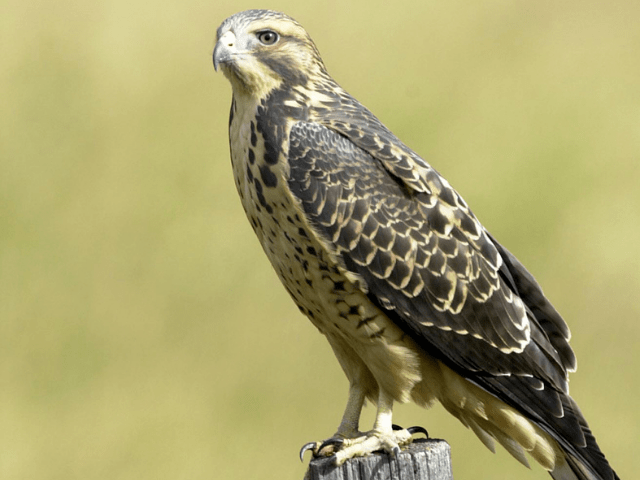
It's another large bird, shorter than the red-tailed hawk, but its wingspan can reach 54 inches.
The rough-legged hawk fancies farmland, marshes, plus prairies, for there’s a bountiful supply of insects, squirrels, birds, frogs, and birds. It nests on a cliff or the edge of a forest.
You may see hawks with light or dark color morphs, and both male and female rough-legged hawks have different plumage in each morph. This migratory bird winters in Minnesota.
8. Cooper's Hawk
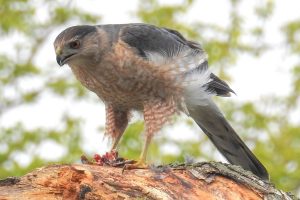
When nesting, it builds a nest near the trunk, high on a tree, to protect nestlings from raccoons and other predators.
It's a resident in the southern region of the state and a breeding population everywhere else. Cooper's hawks live in woodlands, but they also adore backyards for easy prey when songbirds use your bird feeder. Like most birds, the female is bigger than the male bird.
FYI: Cooper's Hawk is also a popular bird in the Pennsylvania State alongside the Broad-Winged Hawk and Rough-legged Hawk!
9. Sharp-Shinned Hawk
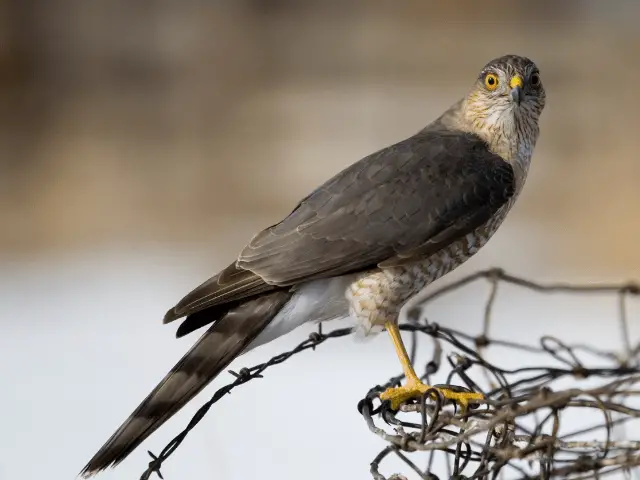
It's a small bird, about half the wingspan of a red-tailed hawk, and since most female birds are larger than males, the sharp-shinned hawk has one of the smallest male raptors.
In winter, this raptor migrates to Central America and the northern side during the breeding season. MN boasts of a migration population, another population that inhabits this state as a breeding range and a non-breeding range.
The sharp-shinned hawk nests in dense forests, and it builds a nest near a tree trunk. Listen for KIK-KIK-KIK sounds to tell it apart from other raptors.
What's more, it may come to your backyard to hunt small birds, so you don't have to look for it very far. You can tell it's a sharp-shinned hawk if it has gray-bluish feathers and a pale orange underpart.
Since the flock of sharp-shinned hawks that visit your yard may also include juveniles, you'll know they are sharp-shinned hawks if they have brown upper parts and a white underbelly.
10. Ferruginous Hawk
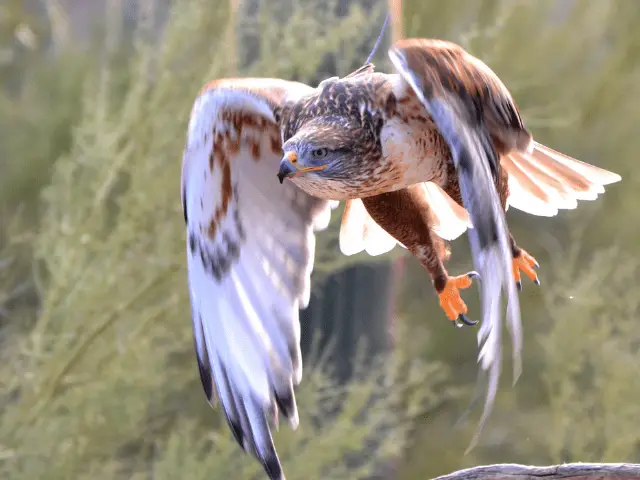
It has feathered legs, like the rough-legged hawk we talked about earlier.
The ferruginous hawk is a rare species, and in MN, you'll see it in the western region. Summer is the best time to look for it, and you'll probably encounter one as it circles the sky over open fields, watching rodents below.
It has a pale white underbelly and rust-colored feathers. Grasslands make the best habitat for it, but woodlands also give it a habitat sometimes.
Frequently Asked Questions About MN Hawks
Are Hawks Protected In MN?
Yes, the law recognizes hawks as migratory birds and protects them from sale, possession, importation, or killings.
What Is The Largest Hawk In Minnesota?
The ferruginous hawk is the largest you'll see in this state. It's about 23 inches long, boasting a wingspan of about 55 inches, and weighs around 3.5 pounds. Other raptors that are almost this big are the red-tailed, the rough-legged, and the northern goshawk.
What Hawks Can Be Seen In Minnesota?
You’ll spot ten species of hawks. The red-tailed hawk is a native raptor and one of the most common sightings wherever you go birding in MN.
Other species have a breeding range, an all-year population in a part of the state, or are migratory. These include the northern harrier, Cooper's hawk, sharp-shinned, rough-legged, and red-shouldered hawk, among others we've discussed above.
Then, there's the rare ferruginous hawk that invites you to a birding tour in the western region, where some birders have seen it.
In this video, you'll learn how to differentiate the adult and juvenile cooper's hawk:
Final Thoughts
One of the places to spot hawks in Minnesota is Frontenac State Park, for it has floodplain forests, prairies, and hardwood forests that attract species like the sharp-shinned hawk. Other birding destinations are Itasca State Park and Hawk Ridge.
Before you go, gather pictures of the ten species we've talked about above to make references, more so because they all have gray, bluish, or brown upper parts. It's even more confusing when you have two that are almost alike - Cooper's hawk and the sharp-shinned hawk.

